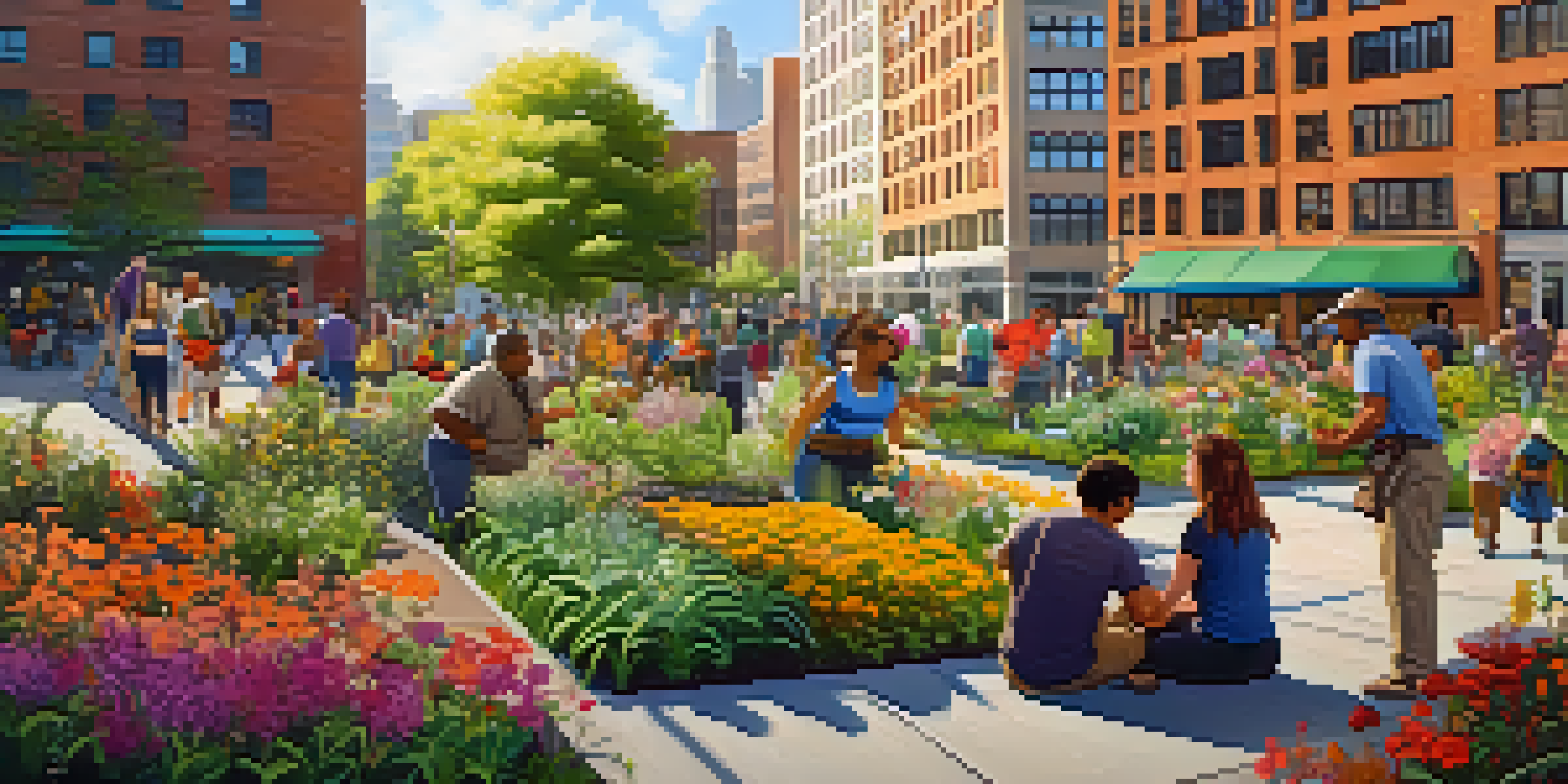Comparative Analysis of Urban Renewal in Detroit and Other Cities

Understanding Urban Renewal: What It Means for Cities
Urban renewal refers to the process of redeveloping areas that are underutilized or deteriorating. This often involves significant investment in infrastructure, housing, and public spaces to revitalize neighborhoods. The goal is to enhance the quality of life for residents while attracting new businesses and investment.
The best way to predict the future is to create it.
In cities like Detroit, urban renewal has been a necessity due to economic decline and population loss. The concept aims to breathe new life into communities, making them more livable and economically viable. As we explore Detroit’s journey, it’s essential to compare it with other cities that have faced similar challenges.
Cities like New York and San Francisco have also pursued urban renewal, albeit in different ways. Studying these diverse approaches provides valuable insights into what strategies can be effective in transforming urban landscapes.
The Historical Context of Urban Renewal in Detroit
Detroit's urban renewal efforts date back to the mid-20th century, primarily driven by the decline of the automobile industry. Once a booming metropolis, the city faced significant economic and social challenges, leading to a mass exodus of residents. This history sets the stage for understanding the current renewal initiatives.

Key moments in Detroit's history, such as the 1967 riots and the 2008 financial crisis, further complicated urban renewal efforts. These events highlighted the need for comprehensive strategies that address not only physical infrastructure but also social equity. Learning from the past is crucial for shaping effective renewal policies.
Detroit's Urban Renewal Strategies
Detroit's renewal efforts focus on community engagement and affordable housing to foster inclusivity and economic growth.
Today, Detroit is embracing a new era of urban renewal, focusing on revitalization and inclusivity. This historical context is essential for comparing the city’s efforts with those of other urban centers, revealing lessons learned and paths forward.
Key Urban Renewal Strategies in Detroit
Detroit's urban renewal strategies have included initiatives like the Detroit Future City plan, which aims to transform vacant land into productive spaces. This plan emphasizes community engagement and collaboration, prioritizing the needs and voices of residents. Such grassroots approaches can foster a sense of ownership and investment in the community.
Urban renewal is about more than bricks and mortar; it's about people and community.
Another significant strategy has been the development of the downtown area, where public-private partnerships have spurred economic growth. By revitalizing commercial districts, Detroit is attracting new businesses and job opportunities. These developments not only improve the economy but also enhance the urban experience for residents and visitors alike.
Furthermore, the focus on affordable housing has become a cornerstone of Detroit's renewal efforts. Ensuring that revitalization benefits all residents is key to sustainable urban growth, and this emphasis on inclusivity sets Detroit apart from some other cities.
Comparative Urban Renewal: Lessons from New York City
New York City’s approach to urban renewal has often centered around large-scale projects and redevelopment initiatives, such as the High Line and Hudson Yards. These projects illustrate the power of transforming neglected spaces into vibrant community assets. The success of these endeavors provides valuable lessons for Detroit.
However, New York's urban renewal has also faced criticism for gentrification, where rising property values displace long-time residents. This highlights the importance of balancing revitalization with affordability, a lesson that Detroit is keen to apply in its own efforts. Understanding these dynamics can help Detroit avoid similar pitfalls.
Lessons from Other Cities
Examining urban renewal in New York and San Francisco reveals important lessons on balancing revitalization with affordability.
Moreover, New York's emphasis on public transit improvements during renewal projects has ensured better connectivity for residents. This aspect underscores the need for comprehensive planning, reminding Detroit that infrastructure investments can significantly impact urban renewal outcomes.
Urban Renewal in San Francisco: A Different Approach
San Francisco's urban renewal strategies focus on tech-driven development and innovation. The city has invested heavily in attracting tech companies, leading to rapid economic growth. While this has resulted in job creation, it has also raised questions about housing affordability and community displacement.
In comparison, Detroit’s renewal efforts prioritize inclusivity and community-driven development, aiming to avoid the pitfalls seen in San Francisco. By learning from the challenges that cities like San Francisco face, Detroit can shape its own path towards sustainable growth.
Additionally, San Francisco's emphasis on cultural and historic preservation within urban renewal projects serves as a reminder for Detroit. Balancing modern development with the preservation of community identity can foster a sense of belonging among residents, a critical element for successful urban renewal.
Community Engagement: A Pillar of Successful Renewal
A vital component of urban renewal is community engagement, which ensures that the voices of residents are heard and considered. In Detroit, initiatives that actively involve community members in decision-making have led to more effective and accepted outcomes. This participatory approach fosters trust and collaboration.
Cities like Philadelphia have also embraced community engagement in their renewal efforts, setting up forums and workshops for residents to express their needs. These strategies not only empower communities but also create a sense of shared responsibility. Learning from these practices can further enhance Detroit’s approach.
Sustainability in Urban Renewal
A growing focus on sustainability in Detroit's renewal projects aims to enhance the environment and improve residents' quality of life.
Moreover, engaging communities in the planning process helps to identify unique local assets and challenges. This grassroots knowledge is invaluable for crafting tailored strategies that resonate with residents and ultimately lead to successful urban renewal.
Sustainability in Urban Renewal: A Growing Focus
Sustainability has become a key consideration in urban renewal projects across various cities. In Detroit, there is a growing emphasis on green spaces, sustainable building practices, and energy efficiency. These initiatives not only enhance the environment but also improve the quality of life for residents.
Cities like Portland have set a precedent for integrating sustainability into urban renewal, demonstrating that economic growth and environmental responsibility can go hand in hand. As Detroit continues to evolve, adopting similar principles can position it as a leader in sustainable urban development.

Additionally, the focus on sustainability can attract a younger demographic that prioritizes environmental consciousness. By aligning urban renewal efforts with sustainability goals, Detroit can foster a vibrant, future-ready community.